The Philippines' Pater Patriae National Hero Dr. Jose Rizal
© CEBU navi SAKURA | vol.8 Mar.-Apr.2017
Table of contents

At the end of the 19th century, Dr. Rizal had a great influence in gaining independence from Spain.
Even now, he still is dear to the hearts of the Filipino people.
Carcar City is located in the south, about 90 minutes by car from Cebu City. There, a statue of Dr. Rizal brightly shines in the plaza. The pedestal is engraved with "December 30th, 1927" in old Cebuano.
Dr. Rizal's Way of Life Brought Pride & Confidence to Many Filipinos
At every country's major turning point, there's always a great man who turns the key. In 1868, many young people were bounding towards the Meiji Restoration in Japan. It was Shouin Yoshida (died 1859, age 29) who had this great influence on the activists. Like Dr. Rizal, he also devoted himself to changing the era. After his final writings and sacrificing his life, the Philippines pushed on to independence, closely resembling the final moments of Shouin Yoshida.
Dr. Rizal was born in the Philippines in June, 1861. He could read and write at the age of 5. Afterwards, he went to university, lucky to be given a higher education. He voyaged to Spain at the age of 21 and entered the University of Madrid where he acquired his pharmaceutical and medical licenses. Since childhood, he had thought Spain was not giving Filipinos proper education and lived his life carrying that feeling.
The fruit born from his thoughts was "Noli Me Tangere (Touch Me Not)". He wrote it in 1887, when he was 26 years old. This novel, written in Spanish, brought attention to Spain for how harshly they ruled over the Filipino people.
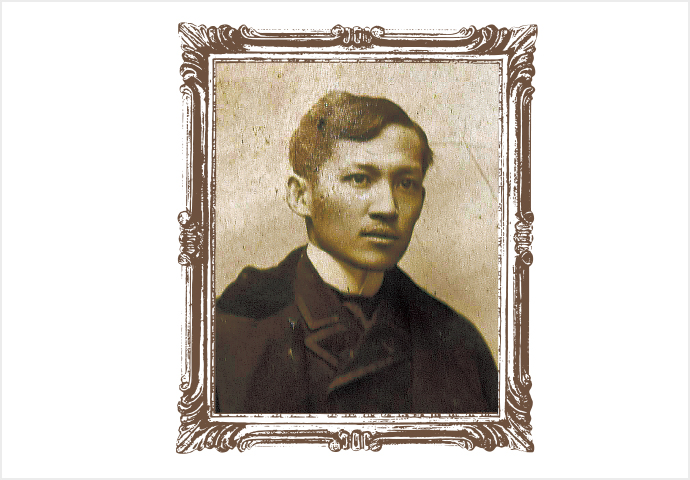
1861-1896 José Rizal
Not only was Dr. Rizal an ophthalmologist, but he was talented in a number of fields like sculpting, drawing, education, agriculture, history, and novels. He left behind a lot of poetry and acquired over 20 different languages. He was well-versed in architecture and economics and knowledgeable in theater, martial arts, fencing, and firearms too.

Books actually used by Dr. Rizal. It's evident he loved literature and art and was learning about Christianity.
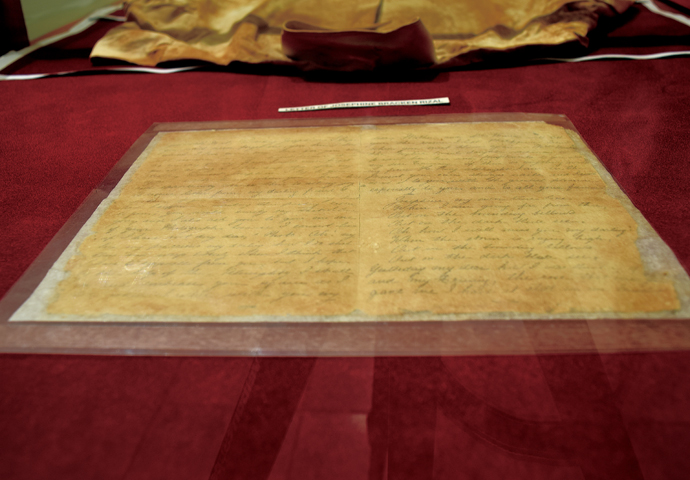
Take a peek back at time with the coat Dr. Rizal actually wore, as well as letters with his handwriting, etc. on display at the University of Southern Philippines Foundation Museum.


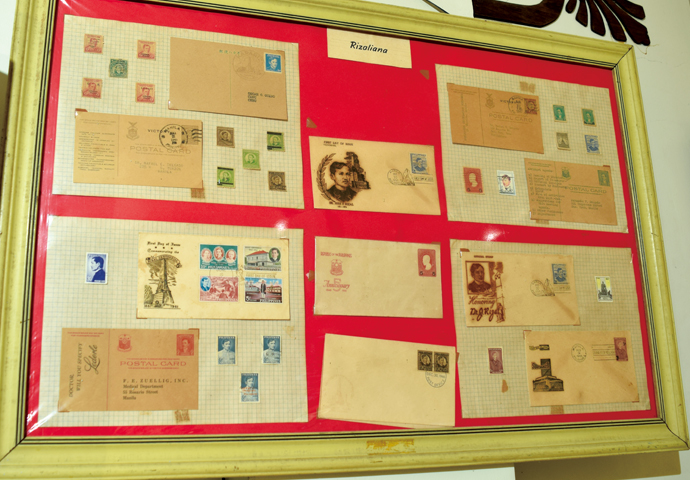
The University of Southern Philippines Foundation Museum in Cebu City possesses numerous documents, newspapers, and commemorative stamps relating to Dr. Rizal. If you look at the articles’ titles, they cover many digressions: Dr. Rizal as an educator, the final diaries & letters of Dr. Rizal, Dr. Rizal as a scientist, etc. From reading these articles, you can begin to see the true extent of Dr. Rizal's influence on the Philippine nation. Biographies and memoirs of Dr. Rizal are also on display. The handsome portrait of Dr. Rizal in profile, used for many stamps, was also depicted on the 1 peso coin in 1970.
His Romance with Japan
T he courageous remarks of Dr. Rizal awakened the pride of many Filipinos, but at the same time, there were those that wanted to keep him away. However, the spirit of independence had been ignited in the Filipinos' hearts.
Dr. Rizal, who had returned to the Philippines, left again for Europe at the end of February in 1888 and decided to visit Japan on the way. The original plan was to stay only a few days however, he was so taken by the Japanese people and culture, he was unable to leave until the middle of April. He left behind the message "the Philippines must become closely tied to Japan". Shortly after arriving in Japan, he met "Osei-san", who was raised in a samurai family. She guided him and interpreted for him as they went to Hakone and Nikko which is famous as a Shinto shrine and a hot spring resort. She taught him the language and about Japanese ink painting, literature, and history. Since Dr. Rizal acquired more than 20 languages by that time, he learned Japanese quickly and enjoyed talking with Osei-san. It might have been innocent love. In Japanese history, Dr. Rizal was particularly moved by the Kabuki play "Ako Roshi (= 'The 47 Ronin')". This story of those Ronin who gave their lives for their lost lord draws sympathy from all over the world - about half those who visit the graves of the 47 Ronin are foreigners.
The Flame of Independence Never Goes Out
The Spanish diplomatic establishments called for Dr. Rizal to stay in Japan as a doctor. However, he decided to follow through with his plan and left Japan for the comrades who waited for him and voyaged from the United States to Europe. Then, he released his second novel "El Filibusterismo" (The Reign of Greed). Here too, he expressed the tyrant Spanish rule and encouraged all the more the Filipino independent movement. The novel caught the Spaniards' attention, as well as those who had governed the Philippines. Spain could no longer ignore him.
Dr. Rizal did not plan on obtaining independence via military power. However, he thought that as the Philippines was a part of Spain, a Filipino representative could be sent to the Spanish Parliament to relay their desires of clergy training, freedom of speech, legal equality, etc. Perhaps, this peaceful approach was the reason why Filipino people sympathized with him.
The well-known Japanese novelists of this same period are Natsume Soseki and Mori Ougai. Though the styles are different, it was the era where many literary classics were born.
At the age of 31, Dr. Rizal returned to the Philippines from Europe, against the wishes of his family and friends. He was arrested and exiled to Mindanao for 4 years. During this time, he tried to marry a woman named Josephine; however, the churches refused. Later, during much of the same time he decided to go to Cuba as a doctor, the militarized independence rebellion rose up, and Dr. Rizal, although unrelated to action, was again arrested. Spain gave him leave to perform his altruistic medical services in Cuba. However, he did not accept it so Spain ordered for his execution. He gave his life for the Philippine. On December 30, 1896, Dr. Rizal left behind a final poem at just 35 years old. Needless to say, this act caused the independence movement to rise all the more.
Although the Philippines gained its freedom from Spain, the leadership changed to the United States and Japan. It was still a long road, over half a century until after World War 2, before the Philippines gained full independence. However, almost all Filipinos know well that Dr. Rizal had a great influence on the Philippines obtaining independence.
Dr. Rizal’s family
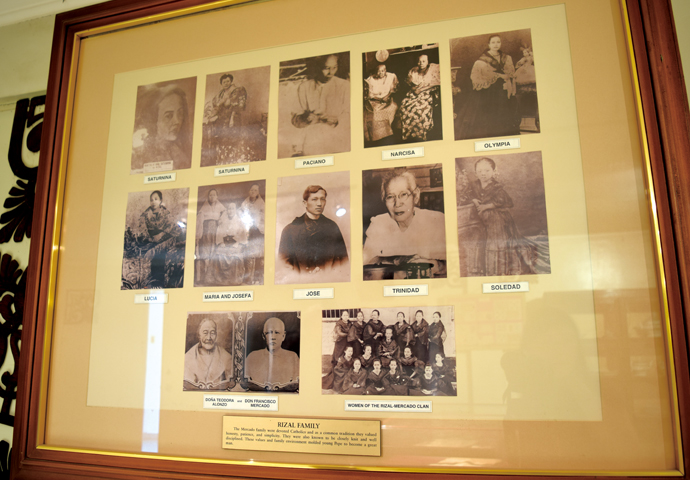
The Mercado family, the father's side, came to the Philippines from China. The Alonzo family, the mother's side, was of mixed blood of a Spaniard and of the Philippine Indigenous. Dr. Rizal was born as the 7th of 11 siblings. In his boyhood, he showed many talents of not only languages, but also with sketching and clay. In 1946, his younger sister, Trinidad Mercado - the 10th sibling of 11 - saw the independent recovery of the Philippines postwar. She donated Dr. Rizal's belongings to the University of Southern Philippines Foundation; these articles are valued as national treasure grade and are owned by the university as they were a direct donation from a family member. Dr. Rizal's sister, Lucia Mercado was the wife of the Vice President of University of Southern Philippines Foundation when it was established. Dr. Rizal had connections with the university, and there are many related collections of him there, the largest in number, except for the Dr. Rizal Museum in Manila.
Dr. Lucio A. Pulmones
Quality Assurance (Former Curator)
University of Southern Philippines Foundation
【Mr. Pulmones' comment】
Dr. Jose Rizal inspired many Filipinos for the freedom of the Philippines. With his love, he claimed the dignity of the Filipinos through education and writing. We Filipinos call him a national hero. I do too, and at the same time, he is also the Father of Independence. He was the pillar of our freedom.
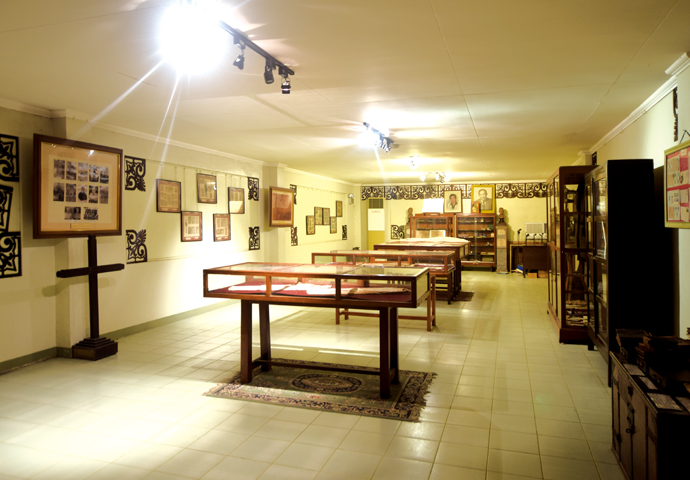
This is the University of Southern Philippines Foundation Museum. With many displays about Dr. Rizal, you can better see the image of this national hero.
※Advanced reservation required.

This is the Rizal Memorial Library & Museum, a public library in Cebu City. Located on Osmeña Blvd, near Capitol Provincial government building and Osmeña Circle. There are many books about Dr. Rizal and Osei-san.
See the National Hero, Dr. Rizal!
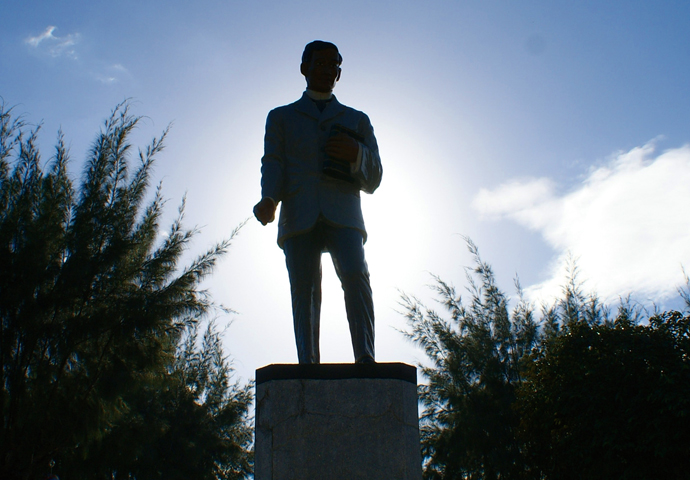
Dr. Rizal at the plaza in Bantayan Island
He has monuments not only in the Philippines,but also in Japan, a country that he loved.
Dr. Rizal - Gazing at the Future in Tokyo's Hibiya Park

Dr. Rizal continues to be loved by many Filipinos. They discuss Rizal’s history from elementary school to college. There are many positive opinions about him such as "he fought against the Spanish, not with force, but with intelligence" and "he wanted to be an ophthalmologist for his mother and took care of her", or even "he was popular with girls, wherever he went." There even was a shocking rumor that he was the father of Hitler. With so many opinions and tales about him, there is no doubt he has been a fascinating figure in the Philippines.
We can see Dr. Rizal’s magnificent monuments, not just in schools, but in various places, like the one at the plaza in Bantayan Island, a remote island in northern Cebu (photo: top-left). The monument of Dr. Rizal in Hibiya Park was established to commemorate his stay in Tokyo (photo: left-center). December 30th is a national holiday in the Philippines - "Jose Rizal Day" - with even a ceremony carried out at the Philippine embassy in Tokyo.
In 3 more years, Tokyo will host the Olympics in 2020. Why not pay a visit to Dr. Rizal's statue in Hibiya Park while you're there? He loved Japan. Even his statue seems to quietly continue carrying his aspiration for a great relationship between Japan and the Philippines.
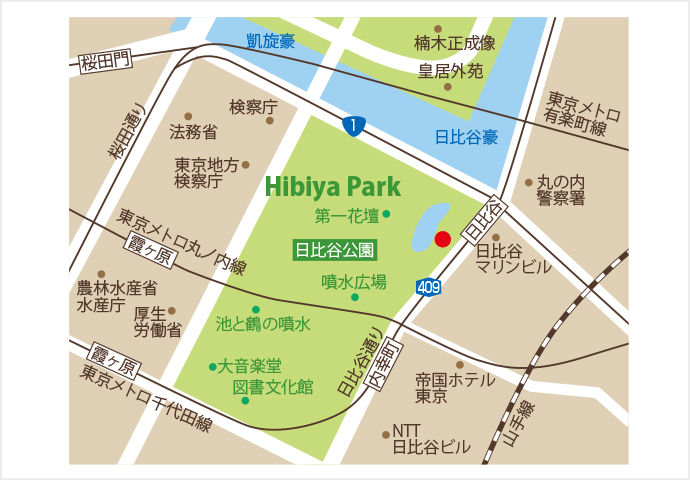
The statue of Dr. Rizal stands close to Shinji Pond, the former site of the Tokyo hotel where he had stayed. Erected in June, 1961.
Rizal Park in Manila - Commemorating Independence Day
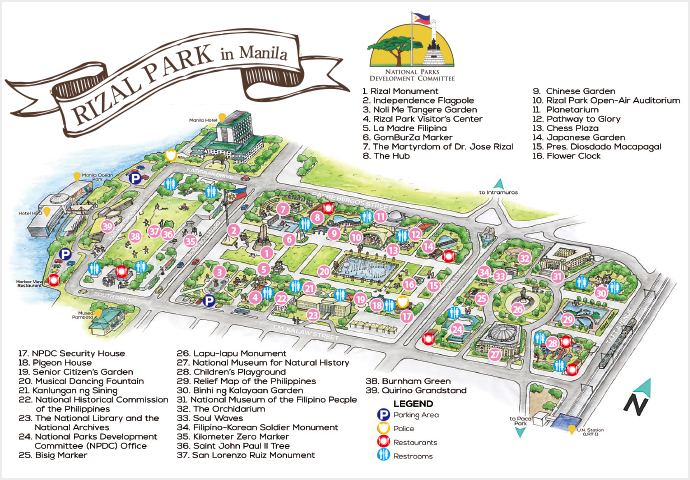
The place where Dr. Rizal spent his last moments became Rizal Park which was built to commemorate the Philippine's independence. Numerous people go there every day, and events are held there every weekend. In the memorial hall, you can see a portrait of Osei-san. The statue of Rizal in the memorial hall was established in 1961, the same year as the one in Hibiya Park, as a donation from the Japanese Rizal Association.
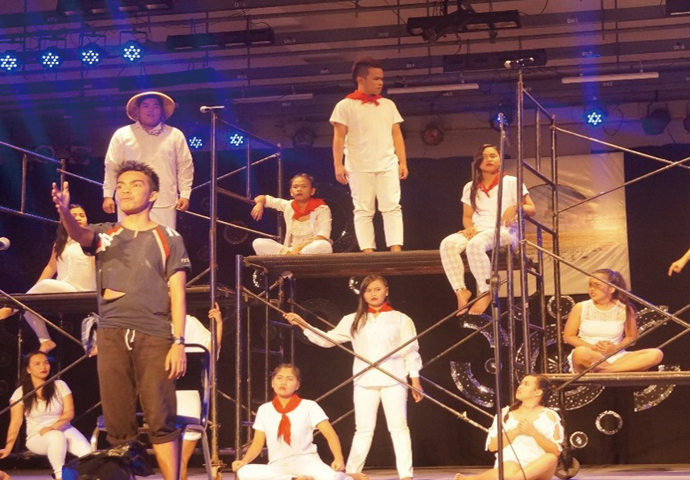

Music, dance, theater, movie, pop, rock, and Catholic concert events are held at the open-air auditorium of Rizal Park on weekends (⑩ on the map).
Back to the list






